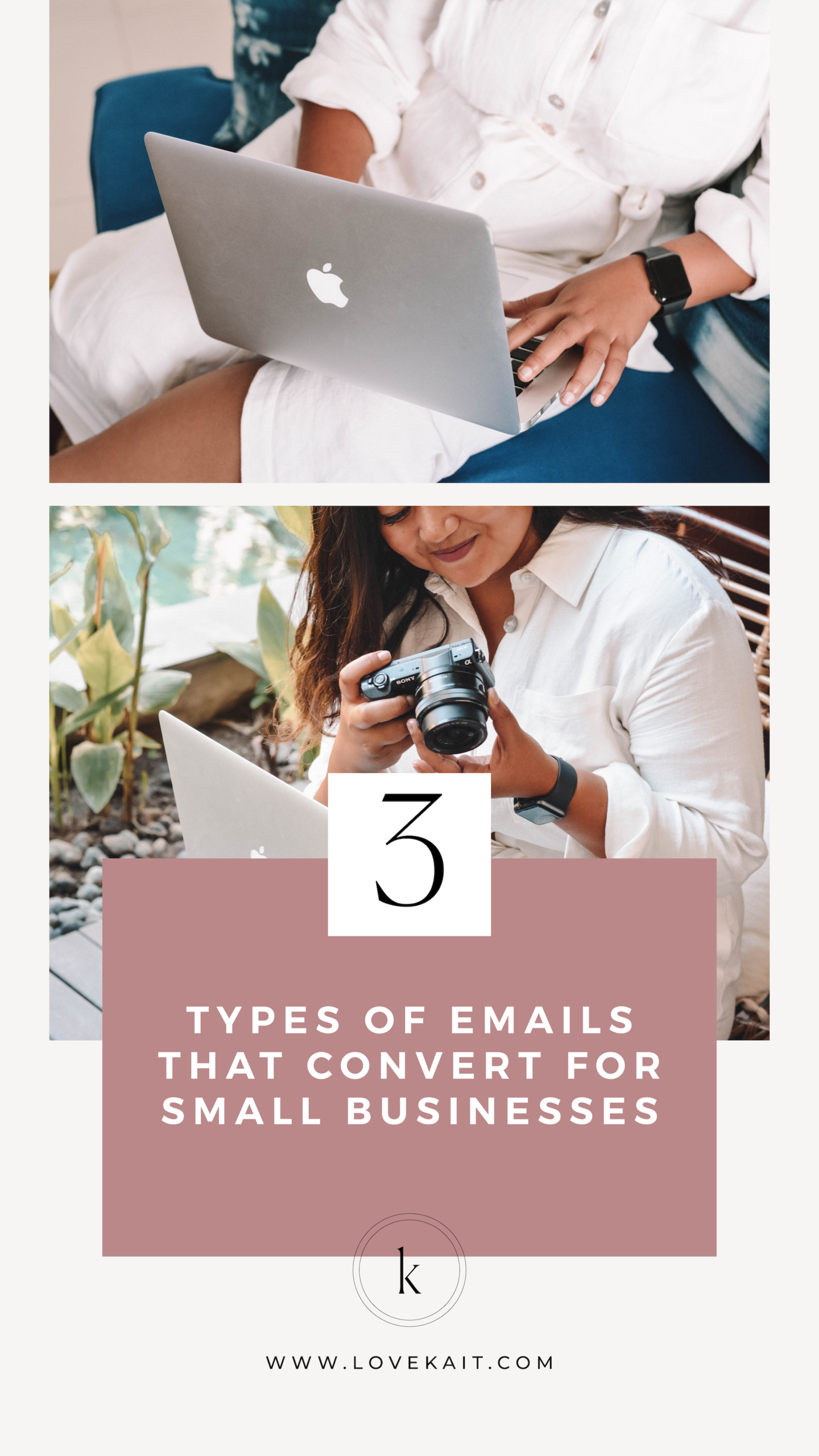
EMAIL MARKETING. Did you gag? We certainly hope not! While that whole term can feel a little intimidating, it’s important not to overthink it. We’d love to share the 3 types of emails that convert for small businesses.
When talking to clients, we find one of their main pain points lies within those two small words: email marketing. We think it’s important for you to remember one thing when you begin writing these:
You’re talking directly to your customer.
There should be nothing scary at all about that – it should feel like a friend, one open line of communication, inviting them into your world & your business. Inviting them, essentially, to get even more intimate with you and share what they need to.
So in hopes of breaking down the barriers of what it is and what it is not – we decided to share our 3 favorite types of emails that convert.
Before we dive into all the lingo, let’s chat about it for a second. It’s important to remember YOUR client or customer when thinking of what to send via email and not to think about the last podcast episode you heard. Hear this: no one knows your customer better than you do.
If you’re having a difficult time mapping out a schedule for your emails, we think Socially Automated would be great for you (just fyi!)
It’s also incredibly important to remember not all emails are made to convince someone to buy something. Some emails (if you’re doing it right) should be made to build trust, to influence someone to continue following along, or to give advice. You must first build a relationship before you dive into SELLING. There is no quicker way to receive an unsubscribe notice than to sell, sell, sell.
PROVIDE HELP and then SELL. Solve a problem, first.
Here are the top 3 insights we give our clients on email marketing:
1: Solve a problem. How can you email your customers today to offer insight or share wisdom on an issue you’re seeing a lot of them have? Let’s say, for example, you’re a clothing store and a lot of your customers have difficulty figuring out the proper ways to tie scarves that don’t leave them looking like a lopsided Jack Frost. If you sent an email with a quick few images to share your favorite ways (or even linked back to an IGTV video with instructions), you’d be helping solve a problem.
Now, I’m sure you’re wondering “HOW DOES THAT HELP ME SELL?!”
For one, you can add a Call to Action to “Check out the newest scarves!” OR you can use this to just simply build trust. They will share with their friends (and you should also encourage it!)
2: Share your latest blog post! Not only does this email tactic get people back to your website, it allows you to continue to pour actionable advice into their soul vs selling a product.
Here’s an example: Let’s say you sell home decor. You can write a blog post about styling the perfect “shelfie” for the holidays. The post would be full of your best tips but essentially show how you used your pieces to style the perfect holiday shelf. Within the blog post, you could link back to those products. It’s a two-for-one sort of selling situation: great content AND selling potential (and good for pinterest content!)
3: The emails that aren’t vague are usually the ones that convert great as well. We’ve seen a lot of poorly designed emails that only show the items that are for sale – leaving nothing to pull the customer in or get their attention and no reason for them to feel wanted or appreciated. Again, this tactic leaves customers feeling bored and like they’re just another number.
Be specific. Want someone to respond to the email with insight? Ask! Want to direct people to certain sales? Say it! And hey, we get not everyone has the extra budget for an in-house designer. Canva is a great tool for designing beautiful emails. Our tip: map out the content before designing it.
While it may SEEM like selling should be the first thought – it should actually be your last. If you focus the majority of your time on actually building a trust-filled relationship, you won’t need to sell a dang thing.
So, what’s YOUR favorite email to receive?
